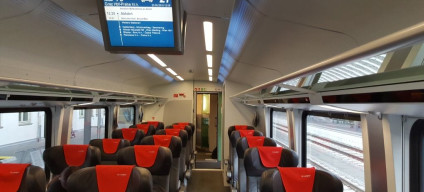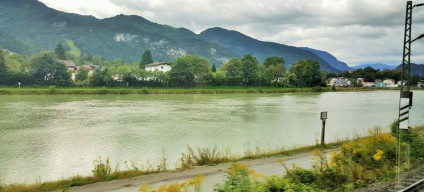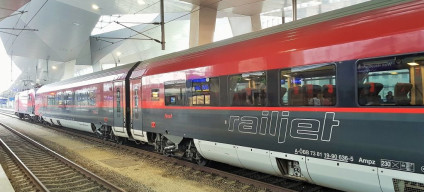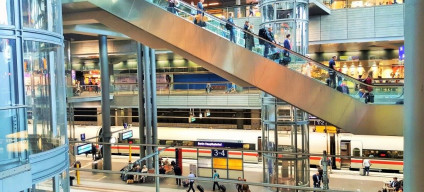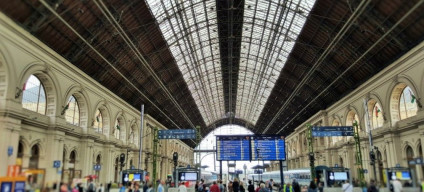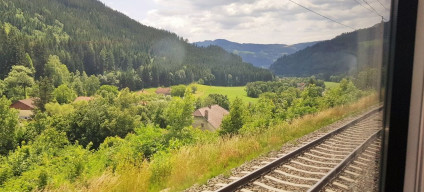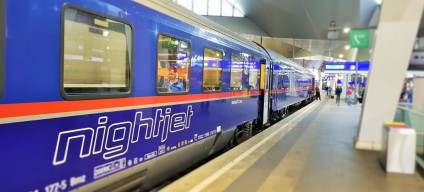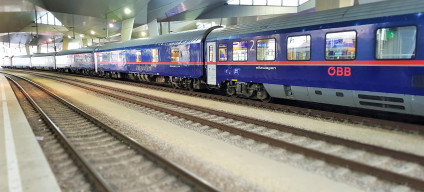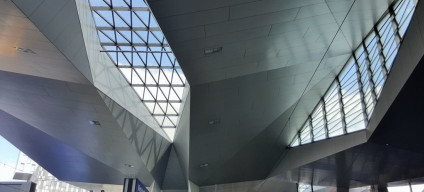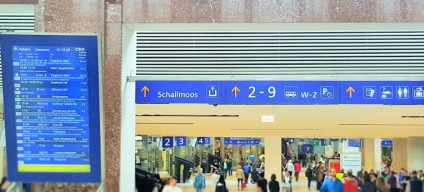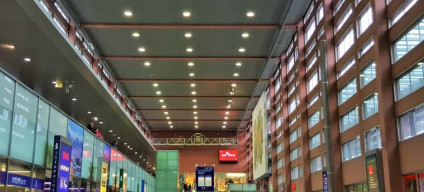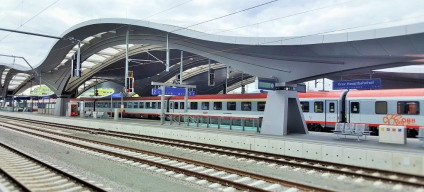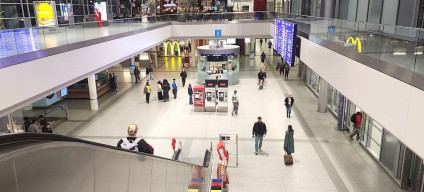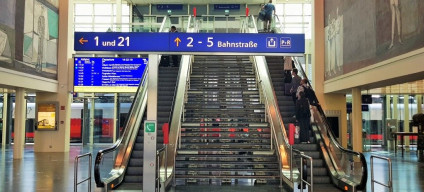Related Content
Content
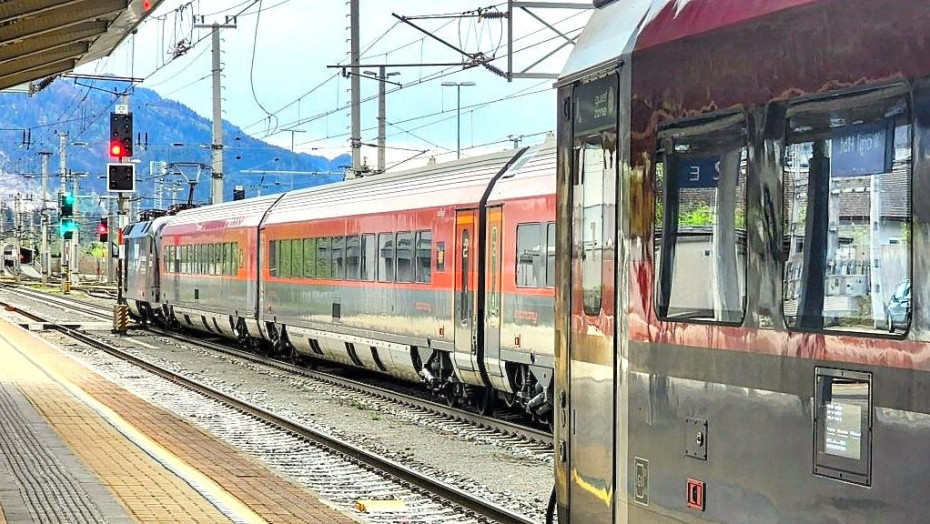
Austria by train
Welcome to our guide how to save money, time and confusion when travelling in and from/to Austria by train.
Share
Introducing Austrian rail travel:
Travelling by train in Austria is generally a joy!
On the majority of journeys you’ll be passing through stunning scenery and most of the stations look as though they were built or modernized yesterday.
Also riding the trains and using the tickets are both comparatively uncomplicated.
Though something to keep in mind that all travellers will need a form of photo identification with them such as I.D. cards or passports, so remember to have them with you even when making a rail journey solely within Austria.
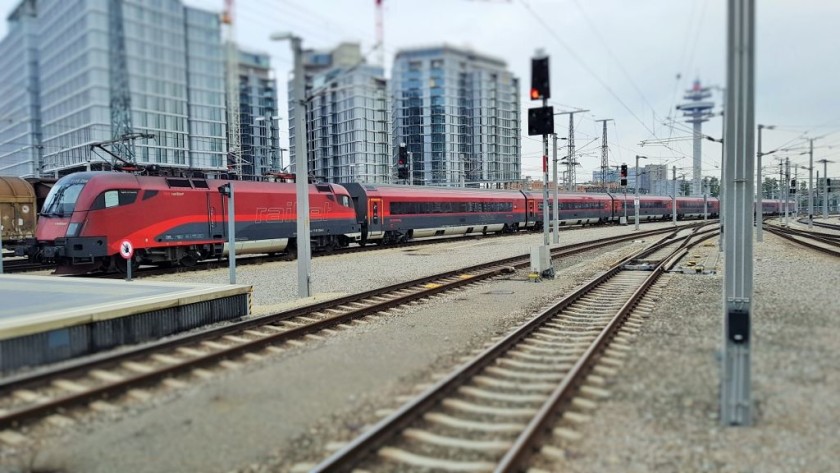

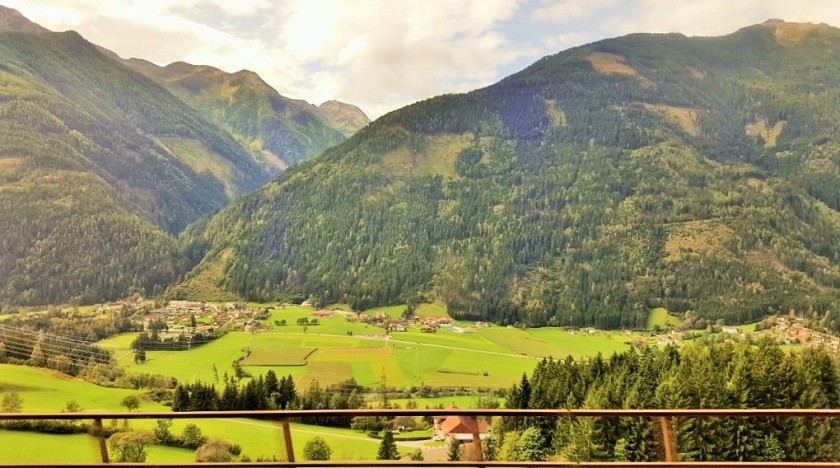
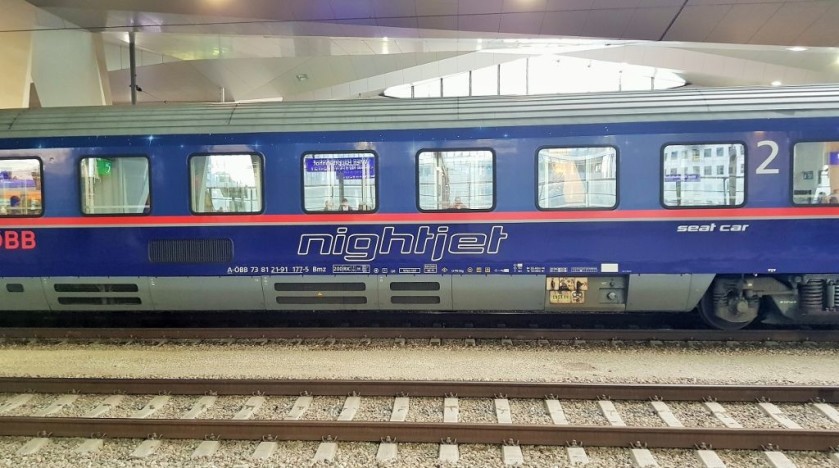
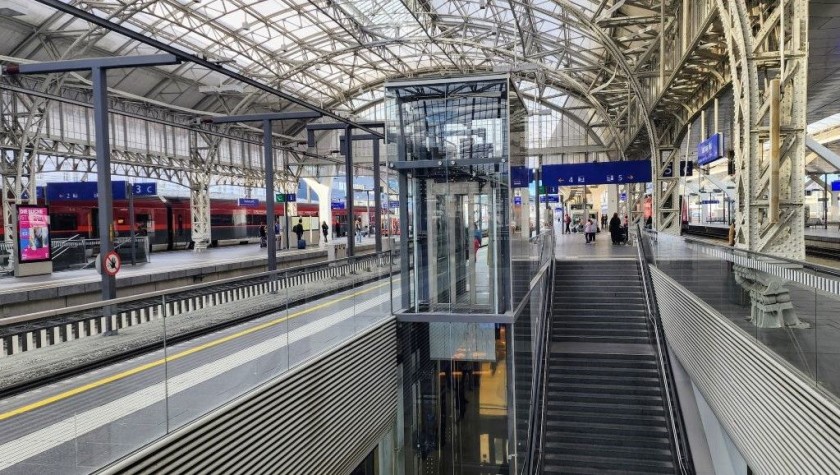
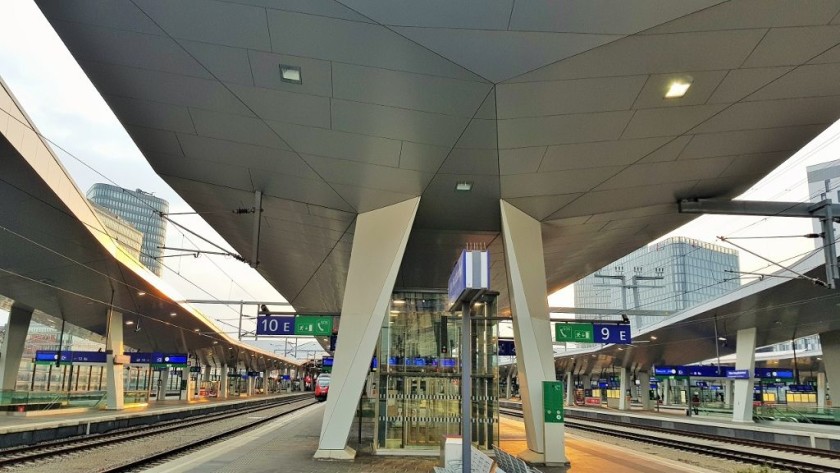
The 9 things most worth knowing...
These are the nine things that are particularly useful to know about Austrian rail travel:
- ÖBB is the national rail operator in Austria - Though many of the long-distance trains it operates, including the daytime Railjet trains travel between Austria and international destinations including Budapest, Munich, Prague, Venice and Zurich.
- ÖBB also operates the Europe's largest network of overnight trains, which are provided by the Nightjet services - which link Austria with multiple cities including, Amsterdam, Berlin, Brussels, Florence, Hamburg, Milan, Paris, Rome and Venice.
- Seat reservations are optional when travelling on the express trains for journeys wholly within Austria.
- When booking tickets with ÖBB for journeys by the express trains, there will be a choice of three ticket types - Non-Flex, Semi-Flex and Flex.
- Tickets for journeys by the Railjet and IC trains are typically placed on sale from 6 months ahead of the travel date.
- The discounted tickets are branded Sparschiene tickets - and an adult booking this type of ticket for 1st or 2nd class, can take up to four children aged 15 and under with them at no extra cost.
- Trains operated by Westbahn compete with the Railjet trains operated by ÖBB on the main Vienna - Linz - Salzburg - Innsbruck route; and from March 1st on the Vienna - Graz - Klagenfurt - Villach route.
- The main central stations in each city are known as hauptbahnhofs, so on timetables these stations are named Innsbruck Hbf and Salzburg Hbf etc.
- The signage at OBB’s stations is bi-lingual, it is in English and German, as are the announcements on the Railjet and Westbahn trains, but the station announcements will be in German only.
Good to know about the trains:
ÖBB is the national operator and it provides the majority of Austrian trains, except for:
(1) some independent scenic mountain railways
(2) trains operated by Westbahn.
ÖBB daytime train services are broadly categorised as:
(1) Railjet Express (RJX): the quicker trains to and from Wien because they skip more stations.
(2) Railjet (RJ): the other express trains between major cities.
(3) IC: these older trains can plug a gap between Railjet departures on a few routes.
(4) InterRegio (IR) a new category of semi-fast train service in Austria on cross-country routes which don't serve Wien
(5 REX: the trains used on local routes and all-stations services away from the major cities.
(6) S-Bahn: the local train network in Austrian cities including Wien, Salzburg, Innsbruck, Graz and Linz, plus in Carinthia and Vorarlberg.
ÖBB also operates the Nightjet network, which comprises most, but not all, overnight train services from and to Austria.
The Railjet (RJX and RJ) services from and to Wien/Vienna tend to operate to fixed schedules, departing hourly or every other hour.
Many Railjet routes also extend over the border, so these trains also link Austria to Boloogna, Budapest, Munchen/Munich, Praha/Prague, Venezia/Venice, Verona and Zurich.
the Railjets:
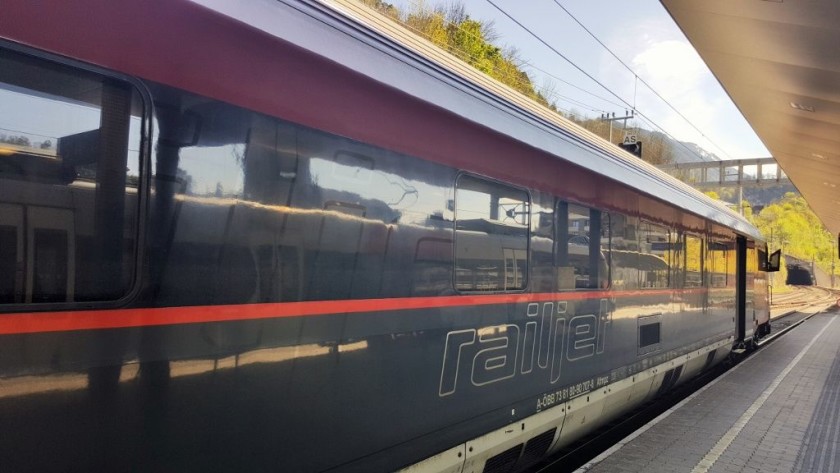
The pride of ÖBB are the Railjet trains which depending on your point of view are either ugly or wonderfully futuristic.
However, what they definitely are is comparatively comfortable, with a wide range of catering options available, including a restaurant service.
They also have Business Class seating in addition to First and Second class.
These trains were initially only used on the top tier express routes in Austria, but now the overwhelming majority of express train journeys are by Railjet.
On the Wien - Salzburg - Innsbruck and Wien - Graz - Klagenfurt - Villach routes, some trains have quicker end-to-end journey times because they skip more stations, so OBB has branded these faster services as 'Railjet - Express'.
On the OBB ticket booking site and on some departure screens at stations, RJX is used to designate these faster trains.
Railjets are also used on international journeys to/from:
- Budapest via Gyor
- Prague/Praha via Breclav (some Railjets on this route are provided by CD, the Czech national rail operator).
- Zurich via Buchs
- Munchen/Munich
- Bratislava
- Venedig/Venice via Graz. Klagenfurt and Villach
- Trieste via Graz. Klagenfurt and Villach
Newer and exceptionally smart Railjet trains are now being used on the Munich - Innsbruck - Bolzano - Verona - Bologna / Venice route.
Seats don’t have to be reserved on Railjets on journeys solely within Austria and in SMTJ's experience finding a spare seat is unlikely to be a problem; except when travelling on routes from and to Wien at;
- peak business hours,
- before and after the major holidays
- Friday pm and Sunday pm.
Though OBB's ticketing service, now indicates which departures will be exceptionally busy - and it can in effect warn that seats will unlikely be available without a reservation.
Reservations are also available, but optional, on the Railjet routes to Czechia, Germany, Hungary, Slovakia and Switzerland, but are mandatory and therefore included when booking tickets for journeys to and from Italy.
the ICE trains:
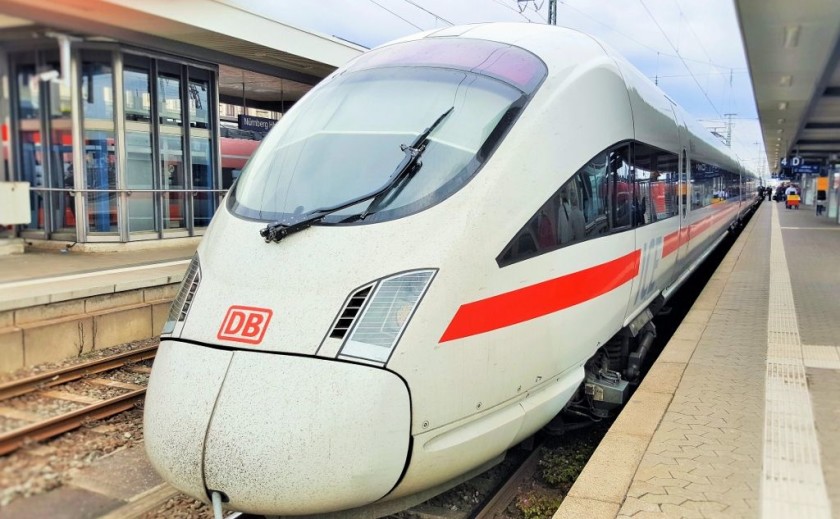
German ICE-T trains can also be used to travel between Wien/Vienna and Wels via Linz; a route they share with Railjet and Westbahn trains.
They are deployed on these routes between Austria and Germany:
(1) Wien – Linz – Nurnberg – Wurzburg – Frankfurt – Koln
(2) Wien – Linz – Nurnberg – Wurzburg – Kassel - Hannover - Hamburg (1 x train per day)
(3) Wien - Linz - Nurnberg - Erfurt - Halle - Berlin (1 x train per day)
Though these routes will be disrupted for most of 2026, due to maintenance on the German rail network.
During June to August, on the ICE trains from and to Germany, reservations are compulsory and included when booking tickets, but are optional at other times.
the EC and IC trains:
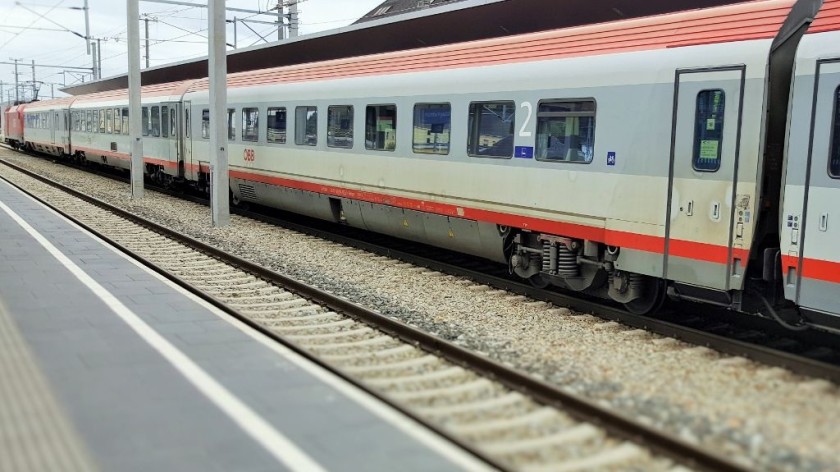
IC trains are more typical of standard, but comfortable, European express trains, and prior to the arrival of the Railjets, they were the top tier trains on ÖBB.
Though these IC train services are becoming quite rare, because on many routes and services, they have been replaced by Railjets in recent years.
Austrian IC coaches are also used for the international EC (EuroCity) trains on these routes:
(1) Munchen – Salzburg – Villach – Ljubljana – Zagreb
(2) Wien – Graz – Maribor - Ljubljana
(3) Wien – Graz – Maribor - Zagreb
(4) Munchen - Innsbruck – Bolzano – Verona – Venice (1 x train per day, as Railjet trains are now used for the other departures on this route).
the regional / local trains:
Non express trains operated by ÖBB have differing categories depending if they operate in big cities or not.
- New InterRegio (IR) services on six routes.
- Longer distance regional trains and the local trains are branded 'REX'.
- Local trains to and from the larger cities are the S-Bahn services.
1st class is not usually available on REX trains or local trains, including the S-Bahn trains.
Westbahn's trains:
Trains operated by Westbahn compete with OBB's Railjet trains, in both directions on these routes.
- Wien - Linz - Salzburg - Innsbruck
- Wien - Linz - Salzburg - Munich
- Wien - Graz - Klagenfurt - Villach (from March 1st 2026)
Three trains per day now take a Wien - Linz - Salzburg ↔ Bischofshofen - St. Johann im Pongau - Schwarzach St Veit - Zell am See - Saalfelden route; which isn't a route taken by Railjet trains.
The Nightjets:
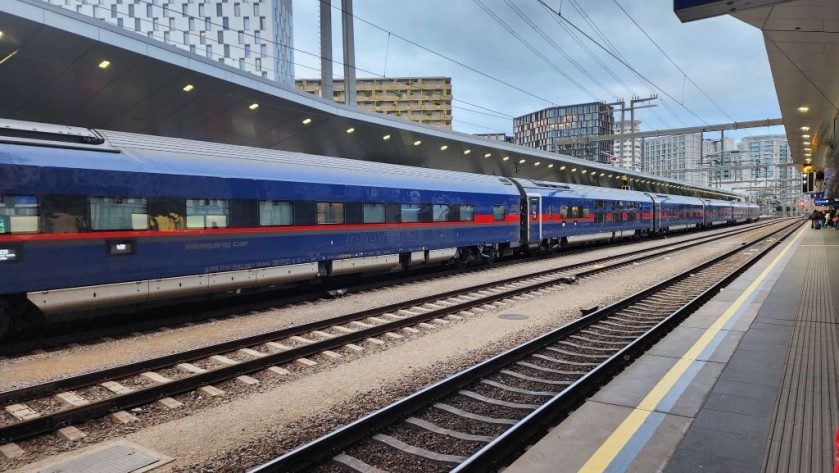
Nightjet trains are operated by Austria’s national rail company, OBB, and it sets a specific and consistent standard of service for these trains on its domestic and international routes.
All international Nightjet trains conveys, couchettes, standard sleeping cabins (no showers) and deluxe sleeping cabins (with showers) - though brand new trains are now being used on multiple routes including those between Austria and both Italy and The Netherlands.
The core differences to the older trains on these newer trains, are:
- they have Mini-Cabins / capsules, which are one person sleeping compartments
- all seats are in saloons
- they don't have 3 bed sleeping compartments, they only have two beds
- the couchette compartments have a max of 4 berths, they don't have 6 berths.
Nightjets also have a dedicated section on the OBB website.
Notes on the ticketing:
When looking up journeys on the OBB website the only price you will initially see is the cheapest 2nd class price per departure.
You need to click on this 2nd class price in order access the other ticket options.
- 1st class tickets
- Seat reservations
- Semi-Flex and Flex tickets
Tickets are typically made available up to 6 months ahead of the travel date, but this booking period can be shorter when looking up journeys which involve travelling after the second Sunday in each December.
The nationwide and international train timetables / schedules have a major annual update, which takes effect from the second Sunday in December.
However, tickets can't be placed on sale until the new timetable is confirmed and this confirmation tends to occur around mid-October, there isn't a set date for this.
So if you will be be looking up a journey for travel after the second Sunday in December and can't find any tickets on the route you want to take, it will be because the tickets haven't yet been made available.
Journeys within a Länder / State:
Austria has nine länders / states one of which is the greater Vienna/Wien area.
However, when taking journeys by train wholly within each of the boundaries* of the other eight länders, how second class tickets can be booked and used differs in comparison to taking a longer-distance journey, which involves crossing at least one boundary that separates the länders.
That's because each länder manages its public transport through its own transport authorities, VVV and VVT, and SVV etc - and that includes the sale of tickets for journeys by train when travelling in second class.
The tickets are sold on the OBB, national rail, website, but as explained in greater detail on the guide to booking tickets for Austrian rail journeys the terms for how these tickets are sold and how they can be used, differ from the discounted Sparschiene tickets that OBB makes available for the longer-distance journeys.
The two universal differences, which apply to these shorter distance journeys are:
- the tickets aren't discounted, so you won't save by booking online in advance
- the tickets can be cancelled and therefore refunded up to before the travel date.
What's also worth knowing is that two transport companies
- SVV, in the länder of Salzburg, which includes Bad Gastein, Radstadt and Zell-am-See
- VVV, in the länder of Vorarlberg, which includes, Bregenz, Bludenz, Dornbirn and Feldkirch
don't release second class tickets for sale more than around a month in advance.
However, because OBB takes responsibility for selling first class tickets, it's possible to look up journeys more than a month ahead when travelling between stations that are wholly within Salzburg or Vorarlberg.
If you do so:
- for departures and connections by the express train services, EC, IC, RJ, or RJX, you will only find first class tickets
- for departures and connections by the local (S-Bahn) and regional (REX) train services, you will see 'tickets are not available', because these trains don't include first class.
It doesn't mean that second class tickets for the express trains and all of the tickets to travel by the REX trains have sold out, instead it's because the tickets haven't yet been released for sale.
Discounted 'Sparschiene' tickets;
The discounted tickets for journeys by RJX, RJ and IC train services, which involve cross state boundaries within Austria, and on international trains from Austria are branded as ‘Sparschiene’ tickets .
These tickets can be booked online or on the OBB app.
They're usually available from 6 months ahead of the travel date, but note that they can't be booked at all at stations.
Though the discounted ‘Sparschiene’ tickets may not be available so far in advance, or made available on every departure on the route you will be taking.
Also the specific departure you will be taking and the date/day of the week you will be travelling, can matter more to the ticket prices, than how far in advance you will be booking.
The price of ‘Sparschiene’ tickets can increase depending on how popular a departure is, the limited numbers at the very cheapest prices will inevitably sell quickly.
So it can be a good idea to search through departures to find the cheapest fares - particularly when travelling between Wien/Vienna and both Salzburg and Innsbruck.
Note the restrictions when booking Sparschiene’ tickets; both 1st and 2nd class.
These tickets will be specific to the departure you selected when making a booking and can't be refunded at all if you subsequently change your travel plans.
They also can't be exchanged to alternative, later departures.
Reservations:
Seat reservations are available, but optional on journeys within Austria by express RJX, RJ, IC, ICE and EC train services, but they are now included as a benefit of booking Semi-Flex tickets.
Note that seats don't have to be reserved on the Railjet trains (RJ and RJX services) on all routes within Austria.
Unless you’re travelling at peak business hours (particularly on Fridays), before and after the major holidays or on summer /winter weekends, finding a spare seat is unlikely to be a problem.
Though for peace of mind, you can opt to pay a €3 reservation fee when booking Non-Flex and Flex tickets for travel in First and Second class.
The OBB website will flag warnings for particularly high demand departures, informing travellers that seats will unlikely be available if you don't reserve.
Seat reservations are not available on Regio and REX trains.
International journeys
Reservations are compulsory and therefore included when booking tickets on journeys to Croatia, Italy, Poland and Slovenia, but not on the RJX and EC services to Czechia, Germany and Switzerland - on these routes they are optional.
On the ICE trains from and to Germany they are compulsory and included when booking tickets during June to August, but are optional at other times.
Child tickets:
On the OBB trains children aged 5 and under travel for free Children aged 6 – 14 travel at half-fare, except when travelling with adults who have booked Sparschiene tickets - when up to four children can travel at no charge.
Bicycles:
You can’t just hop on a train with your bike in Austria.
To travel by regional REX trains you will need to purchase a special bicycle ticket, which costs 10% of the full price 2nd class ticket; a minimum fee of €2 applies.
For journeys by Railjet trains; IC trains and on international EC trains within Austria, you will need to reserve a space for your bike prior to boarding; the reservation fee for bikes on these trains is €3.50.
Though be aware that bike space reservations on the Railjet trains in particular can sell out days in advance.
On the Innsbruck to Feldkirch via St Anton route the Railjet and EC trains are the only services available west of Landeck-Zams, so if the bike space reservations are sold out, no alternative trains will be available.
More info about how to book these bicycle tickets is available here.
Seniors:
Discounts for Seniors aren't automatically applied to Austrian rail tickets.
A Vorteilscard Senior card for those aged 65 and over costs €29 and can be purchased at station ticket counters.
It then gives a 50% discount on most Austrian rail tickets.
The detailed train ticket guide:
Help with booking train tickets
The super smart and useful ÖBB website also has its quirks
Top 8 scenic mainline journeys:
- Salzburg <> Villach via Bad Gastein
- Innsbruck <> Brennero
- Wiener Neustadt <> Villach via Judenburg and Unzmarkt
- Feldkirch <> Innsbruck
- Innsbruck - Jenbach - Zell am See - Stainach-Irdning - Leoben - Graz
- Wiener Neustadt <> Graz
- Attnang-Puccheim - Hallsat - Bad Ischl - Stainach-Irdning
- Innsbruck <> Mittenwald
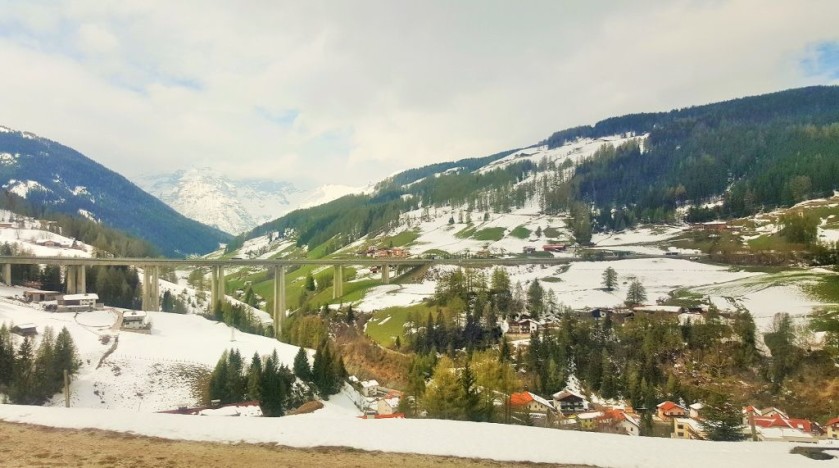
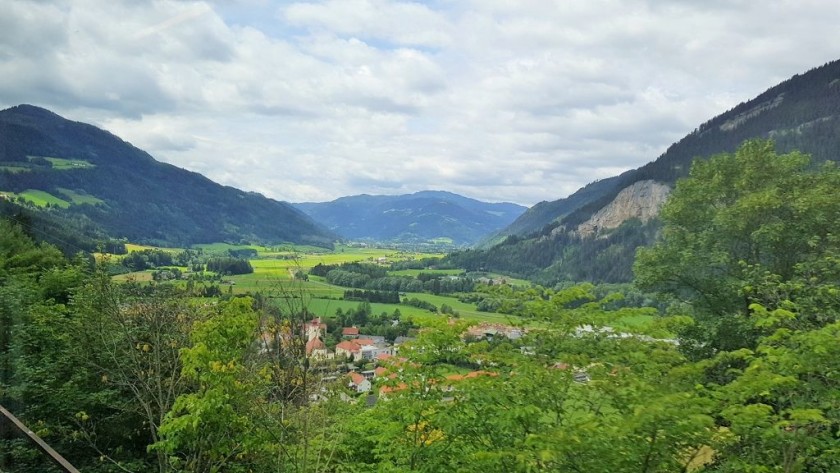
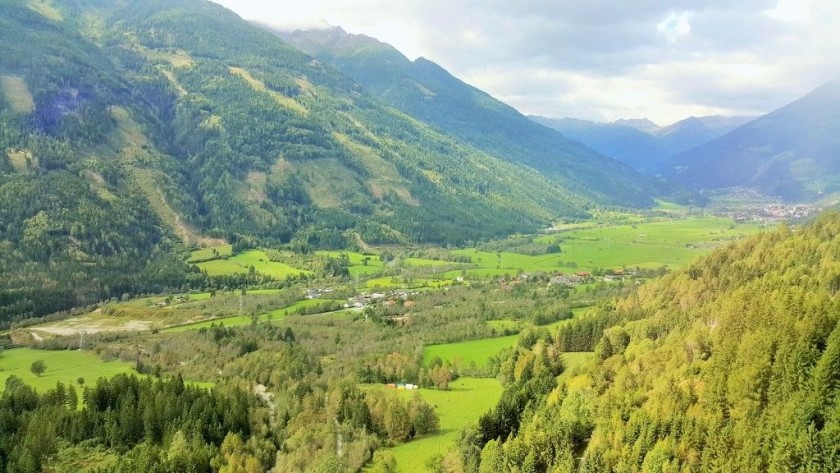
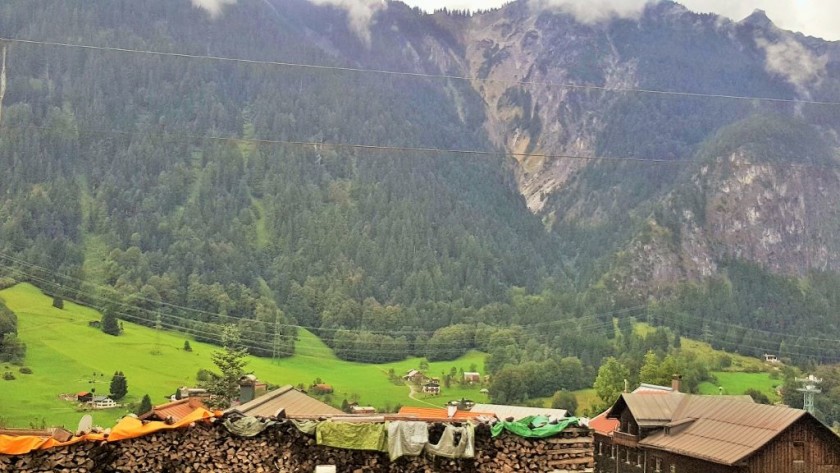
Journeys from Wien/Vienna
The journey guides include access to booking links and information about the trains, tickets and destination stations. Plus for the scenic routes there are insights on how to make the most of the rides on the trains.
Search for a journey:
Tips for using the stations:
Five Things that are good to know when using the main stations in Austria:
1. Austria’s major stations (the hauptbahnhofs) including those in Graz, Innsbruck, Linz, Salzburg and Wien/Vienna are comparatively simple to use.
They all follow a similar pattern of having underground passages that are located beneath the tracks that give access to the trains above.
There are always lifts and escalators, which connect the bahnsteigs (platforms/tracks) that the trains arrive at/depart from, with these passage ways.
You never have to use the stairs at a hauptbahnhof (major station) to access the trains.
2. The signage at OBB’s stations is bi-lingual, it is in English and German, but the announcements will be in German only.
3. Announcements are generally made to alert travellers to something out of the ordinary, such as delays
If you think the announcement may be referring to your train watch the departure screens closely.
Particularly pay attention to any scrolling text to the right of the ‘nach’ column, which shows the train’s final destination.
The English translation should follow the German text, so you may need patience to find out what you need to know.
4. The major stations don’t have paper departure sheets, so you have to depend on the electronic departure screens.
Though at busy times the smaller screens will only show trains departing in around the next 25 mins.
5. If you will be changing trains at a hauptbahnhof (major station) there will be blue electronic departure summary screens on the bahnsteig (platform/track).
Though if you will be changing trains and can’t see your next train on this departure screen, the best option is usually to make your way to the main departure hall and wait there for the details of your next train to be confirmed.
You may then need to re-trace your steps, but you can often avoid this if you will be travelling on a Railljet, IC train, or on some EC trains.
While you're on the train, check the paper guide to the departure you’re travelling by, which you should find by your seat.
It will list the details of connections from your train, including the number of the bahnsteig (platform/track) which your next train should be departing from.
Making your way to the train:
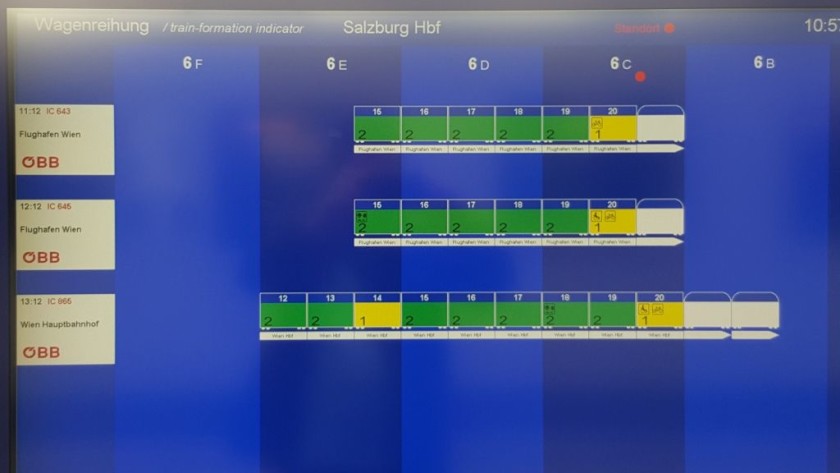
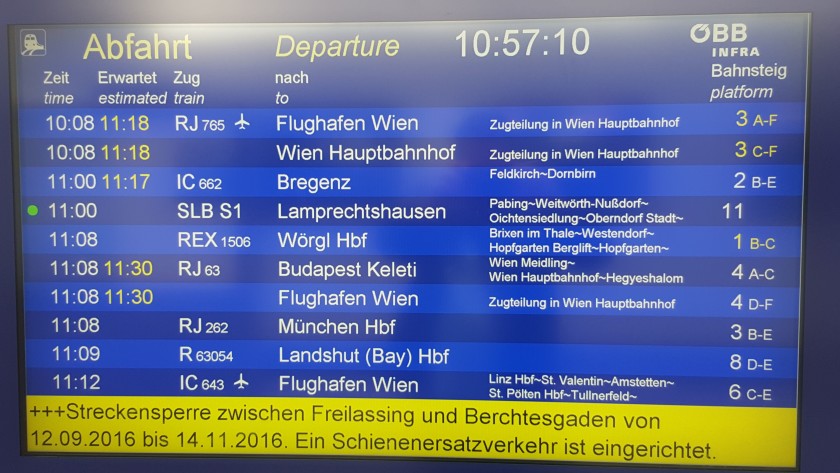
It's worth being aware of these six steps:
1. When looking at the main departure screens ‘Abfarht’ = departures and ‘Ankunft’ = arrivals
2. The bahnsteigs (platforms/tracks) at the hauptbahnhofs (major stations) are divided into zones - A to E.
Most trains only occupy some of these zones, they tend to be shorter than the bahnsteigs (platforms/tracks).
3. On the blue departure screens, small and large, the NUMBER of the bahnsteig (platform/track) will be listed to the right, of the list of stations that the train will be calling at.
To the right of this ‘bahnsteig’ number will be some letters and these letters are the zones on the bahnsteig (platform/track) where the train will depart from.
4. When you arrive on the bahnsteig you will see other blue screens; from a distance they look similar to the smaller version of the departure screens, but they show different information.
Those screens show the ‘Wagenreihung’, which are the formations of the next three trains to depart from the bahnsteig (platform/track).
They indicate which zone each specific coach of a train will occupy when it arrives.
So they’re very useful for working out in which zone you should wait for 1st class, or for a specific coach/wagen where a reserved seat will be located.
5. The departure indicators on the bahnsteigs (platforms/tracks) can show the details of arriving trains.
So don't be surprised if you don't initially see the details of the train you will be taking.
6. If you have a reservation or a Sparschiene ticket it will have a Zug (train) number on it; a four digit number beneath the departure date and time.
This number will also be shown in the ‘Zug’ column on the blue departure screens.
If you will be taking an international train and aren’t sure of its final destination, you may need to rely on this ‘Zug’ number to work out which bahnsteig (platform/track) your train will be leaving from.
The stations that international trains call at can be omitted from the departure screens, but you can use the ‘Zug’ number to find your train.
Detailed info on the major stations
Click the buttons below to discover how to travel to and from the stations by public transport, plus links to additional info including the station and city websites.
Please support ShowMeTheJourney
This second version of ShowMeTheJourney is exciting and new, so we are genuinely thrilled that you are here and reading this, but we also need your help.
We’re striving not to let anything get in the way of providing the most useful service possible, hence a facility has been set up with DonorBox which can be used to support the running costs and make improvements.
Instead of advertising or paywalls, your financial support will make a positive difference to delivering an enhanced service, as there’s a lot of ideas which we want to make happen.
So if you have found the info provided here to be useful, please go here to say thank you.
General travel guides which feature Austria:
Practical info which will help ease the journeys
Inspirational travel guides which feature Austria:
This second version of ShowMeTheJourney is exciting and new, so we are genuinely thrilled that you are here and reading this, but we also need your help.
We’re striving not to let anything get in the way of providing the most useful service possible, hence a facility has been set up with DonorBox which can be used to support the running costs and make improvements.
Instead of advertising or paywalls, your financial support will make a positive difference to delivering an enhanced service, as there’s a lot of ideas which we want to make happen.
So if you have found the info provided here to be useful, please consider saying thank you.
See if there’s a unique journey guide for your trip, featuring info on the trains, tickets & stations.

This is one of more than 100 train travel guides available on ShowMeTheJourney, which will make it easier to take the train journeys you want or need to make. As always, all images were captured on trips taken by ShowMeTheJourney.






